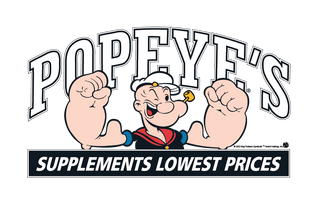
All about endurance supplements
Maybe you like jogging outside through a busy city, taking in the atmosphere of your surroundings, or someone who plays a ton of sports like soccer and football. You could be more of a countryside person, where you like riding your bike on challenging paths, or taking a relaxing hike through nature. Regardless of your preferences, there’s one thing that unites all of these practices and forms of training – that is, you need endurance to get the most out of them.
Regardless of being a veteran endurance athlete, or a beginner who wants to go on regular walks and see where that takes them; your body needs the correct resources in order for you to perform the task you want. This primarily takes the form of your daily diet, which should include plenty of protein, regular intake of fiber, a lot of water, fruits and veggies, and so on. But, on top of this, there are a ton of other tips and techniques that you can use to up your game! That’s what we’re here for today, to be your Endurance Supplement Guide!

Delicious, Delicious Carbs
Remember how we used to think fats were evil and the cause to all disease? Well, now it’s looking like we’re doing the same thing with carbs. And, as per usual, the real answer is always found somewhere in between. Rather than thinking about “Carb” as one of the four-letter words you can’t say on TV, think of it as a tool at your disposal to get your cardio machine going!
Professional coaches and athletes know this already, that’s why a number of athletes who train over 4 hours per day will have over 4000 calories just in carbs, alone! While you might not need that many for your own purposes, it still makes for a great example that carbs can be your best friend. Why? Because carbs are used both for energy, and to help you retain water.
Carbs we consume are (up to a point) usually first made into glycogen, which is our liver and muscle’s internal store of carbs that are available to them at a moment’s notice. Excess carbs beyond that are retained as fat, which takes longer to use, but you can store a lot more energy for later use. In our case, though, we want to focus on glycogen. Especially because, along with the glycogen, we retain additional water in the muscle, which helps your hydration and endurance enormously.
A standard recommendation for carbs is as follows: During events that are less than 60 minutes long, no carbs are needed (though you can still consume them – 30g will do). In events that last longer than 60 minutes, however, you should have 30 – 60g of carbs per hour of training. In events longer than 2.5 hours, that number may be more between 60 – 90g of carbs per hour, if your body can handle it (some might not have a digestion that agrees with that amount).
Of course, your daily carbs should come from things like rice, potatoes, quinoa, lentils, and whatever other carb sources you like. But potatoes are best not eaten in the middle of an event, in those cases, you can try using a carb supplement.
Here are a few carb supplements that we find work best for endurance training: ATP Pentacarb, EFX Karbolyn, CytoSport CytoMax.
Aminos and Minerals
Two areas of endurance supplementation that might be neglected, especially when someone first starts out are their amino acid and mineral intake.
Let’s start with amino acids. Did you know the amino acids you consume can actually affect what tissues tend to be made more? For example, when looking at protein sources, those that are richer in glutamine and glycine (typically plant sources, and collagen) will help make more soft and collagenic tissues, making it great for organ and joint health, but not as useful for muscle development. Instead, you want leucine-rich amino acids for the job (meats and whey).
Other amino acids are important, too. Hydroxyproline, found uniquely in collagen, is important in the synthesis of your own collagenic tissue. This is why collagensupplements are great for your joint health, they contain the glycine and hydroxyproline your body needs to fabricate organ tissue and joints.
Minerals, on the other hand, aren’t used directly for the building of things (though some mineral play a role in the process), rather for just about everything else – water balance, ATP use, bone health, oxygen transport, antioxidant duty, signaling and more. But for our purposes, our focus is on how minerals are needed for water balance, and for how your muscles work.
I don’t think we’re breaking new ground by telling you that, during your endurance event, you sweat. To further blow your mind, in that sweat, are minerals. Specifically, sodium, and chloride are the most abundant but some potassium, calcium and magnesium are found in the mix as well. Sodium, chlorine and potassium play roles in both electrical signaling (the function of which should be pretty clear – muscles don’t move without their signals), and in water balance. Water balance is important because it helps regulate body heat generated during your training (why do you think you sweat in the first place?) and improving your recovery out of training.
Calcium and magnesium, on the other hand, are used for mechanical purposes. They are used in the process of muscle contraction. For example, calcium is one of the main minerals that operate the neuromuscular junction – which is the site where your motor neurons and muscles meet, signaling contraction. Calcium is further used in muscle contraction itself, causing filaments to slide and hook into each other in a way that produces contractions (read about the Sliding Filament theory if you want to learn more about that, it’s very interesting).
Magnesium, on the other hand, is important in the use of ATP. It also competes with calcium to help relax muscles. This makes it part of the contraction-relaxation cycle uses to propel yourself forward and complete tasks. The measure of endurance is, to a certain degree, how many times you can repeat this cycle with as little degradation as possible. So, to maximize this cycle, its components are needed in adequate supply.
The bulk of all these minerals should come from your daily diet, with meats, vegetables, fruits and dairy offering the bulk of what you need. However, some minerals, specifically sodium and potassium, are great additions to your intra-workout drink, typically combined with either carbs or amino acids. Others, like Magnesium and calcium , are solid daily supplements to consume, to make sure that your body can meet all of its mineral-based needs.
Some great supplements to use for their amino acid value include: Progressive Collagen, Mutant BCAA, and Beyond Yourself AMRAP.
If you’re interested in minerals to help your training, check out: ATP Electrolytes XL and Biosteel High Performance Sports Mix.
Going for longer
Of course, one of the most important parts of endurance events is … well, the endurance. And by that, we mean the ability to aid your body in maintaining its integrity during the actual event itself. Until now we’ve talked about fueling and supplying the body with the resources it needs to keep going. Now, let’s look at some supplements that help your muscles keep up while you put them through their paces.
First up is probably the most textbook, yet misunderstood supplement of the endurance bunch – beta alanine. The likelihood, that you’ve heard of beta alanine if you’ve been around supplements for any measure of time is pretty high. And for good reason, beta alanine might just be one of the single-best performance and endurance supplements out there. It works by being combined in your body with histamine to form a dipeptide called Carnosine, which accumulates in great quantities in the muscle.
The reason for its presence is to act as an intramuscular buffer – meaning a compound inside your muscles meant to stabilize pH. As you workout, the pH in your muscles changes – you produce lactic acid, minerals enter and exit the cell (which have their own effect on pH), you metabolize certain compounds, shifting their chemical balance, and so on. All of these changes mean a change in pH in the muscle should it be unregulated. Given that all of your body’s proteins are meant to only work in very narrow ranges of pH, a shift upwards or downwards can spell disaster for your performance.
Carnosine, made from adequate supply of beta alanine, is one of the most important buffers in a muscle cell, specifically it buffers acid – meaning it takes up acidic particles (in chemistry, this would be hydrogen, or H+) without changing its own acidity. The result is less net acid floating around, which keeps your muscles working hard for as long as possible!
The misunderstanding, however, comes from the fact that beta alanine is found in preworkouts, making it a preworkout supplement that you take on occasion. This is not the case, in fact, beta alanine is a supplement that seeks to help you maximize your carnosine stores. To do that, you need to take it consistently, each day. This means 1.6-3.2g of beta alanine per day (you can take it at once, or in 1 g intervals to avoid tingling sensations) to see beta-alanine’s maximal effects.
The next supplements we want to look at both affect how your muscle cells handle their energy requirements, which is another highly important part of endurance training.
Creatine is a supplement that most people associate with bodybuilding and strength. This is because creatine is at its best for short-burst, high intensity exercises. While this is certainly a correct association, it isn’t the limit of what creatine can be used for. One thing to keep in mind is that a lot of endurance training is enhanced by strength training, as it helps form neuromuscular connections that enable better control, cause muscular adaptations that can enhance overall performance/recovery, and improve maximal power output – especially towards the end of an event when you’re gunning for that last little bit of speed!
So, how does creatine work? In essence, creatine is your short-term energy store, used when your body can’t keep up with the demand. When training, your energy consumption follows a path – first is basic phosphate reactions in your cell. You do these every day, and this is what you mostly use when training for endurance. However, when you increase your level of exertion, like picking up the pace to get over the finish line, or a particularly hard bit of terrain to cross, then your ATP demands exceed your production. At that point, creatine comes into play, supplying stored phosphate so you can make a little bit more ATP without any oxygen, and the more creatine you have, the more phosphate you store, which gives you just that much more to push yourself with.
Check out Xtend Elite, and Allmax beta alanine, along with a wide array of our preworkouts if you’re interested in beta alanine.
And you can look at EFX KreAlkalyn, Rivalus Creatine, and Fusion Purple K if you want to see some great options for creatine .

What about after you’re done?
Most people always think about everything you need to do during or before an event to prepare, but what about after? You don’t just run one thing once and never do it again. You also don’t play one game of soccer and decide you’re gonna hang up the cleats. You have another run tomorrow, another game – another “something” that’s going to push you to keep going. For that, you need to recover quick, and effectively. Especially since this is the point in time where you actually reap the adaptation rewards for having put so much effort into your event in the first place.
Of course, any plan you want to have to increase your recovery is going to involve protein . Not just as a supplement, but as a general rule, you want about 0.8 g – 1 g of protein per lbs of bodyweight if you’re male, and 0.6 g – 0.8 g per lbs bodyweight if you’re female per day in your total consumption. This should mostly be acquired through meals, but a protein supplement can go a long way to help you meet your needs, and provide an easily digestible form of protein to have either after or between events.
You can further mix your protein with carbs to enhance the overall recovery effect, one helps restore glycogen, the other is to build and repair your body’s protein .
The next thing you want to address is joint health and inflammation, which is best done with a one-two punch of curcumin (turmeric) and Fish oil.
Fish oil is the quintessential anti-inflammatory and joint health supplement. Its EPA and DHA content is good to form resolvins and protectins, both of which are crucial to your body’s mitigation of inflammation. EPA is also specifically used in the formation of Eicosanoids, which act as anti-inflammatory signals to the body. DHA, on the other hand, is great for brain health, and function, being one of the most important lipids in neuron structure and integrity.
Then you have curcumin, or the spice it is found in, turmeric. Also, an anti-inflammatory, known for its use in joint health. However, it operates on a different mechanism to Fish oil. Specifically, operating on NF-kB, which reduces inflammation in joints and contributing to their overall health.
On top of that, curcumin is a powerful antioxidant, which protects against free radicals and oxidative species. These are molecules that can be made as a by product of our energy production, and are incredibly destructive. Blocking our recovery and worsening our health. Antioxidants are able to neutralize free radicals without becoming toxic molecules themselves. In the end, this makes us stronger, healthier, and more able to perform.
Here are some proteins we recommend for anyone doing endurance events and wants a good protein: PVL Isogold, Magnum Quattro, and Iron Vegan Athlete’s Blend.
If you want to integrate more anti-inflammatory products, take a look at Progressive Curcumin Turmeric, ATP Omega-3 Triglycerides, and Progressive Omegessential Forté.
Let’s wrap things up
This guide has a lot of information in it. So, let’s summarize:
- Don’t be afraid of putting carbs into your diet to help your performance
-
Amino acids are important
- Glycine in plant and collagen proteins for joints
- Leucine in muscle meats for muscle-building
- Minerals are a big part of performance, don’t slack on getting yours!
- Beta alanine and creatine are great for improving your endurance
- Eat plenty of protein
- Anti-inflammatories are excellent for performance and joint health
- Enjoy what you do and push yourself to do more! (OK, that wasn’t in the article, but you should do that anyway!)
You don’t have to use all of this information to maximize your performance or recovery, but you can always use these tools to boost your performance as you need them. Take things one at a time and integrate a new good habit each day, and you’ll begin to see your progress advance day by day! The most important thing above all, even all the science – is that you remain consistent in what you do and keep working hard at it.








